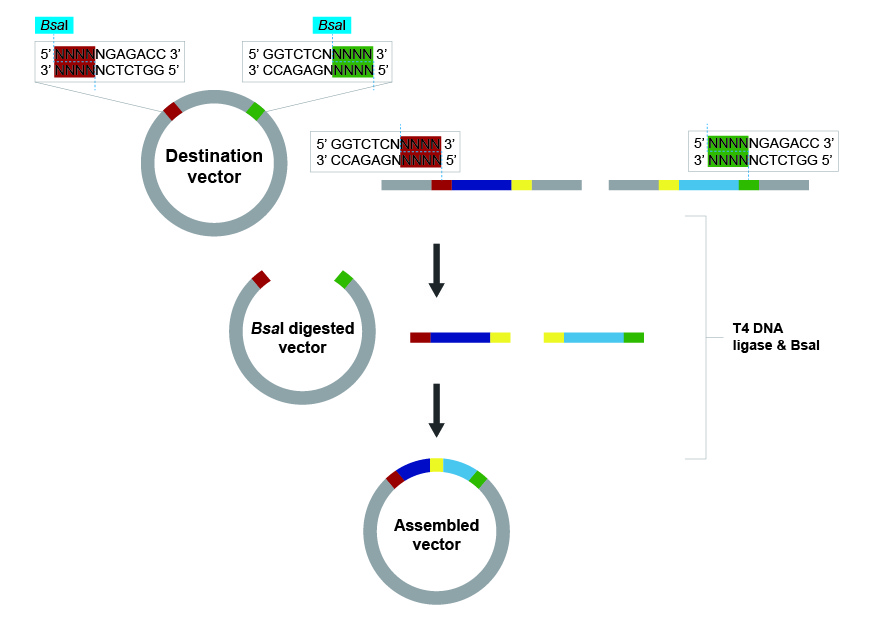Overview of Golden Gate Cloning
The Golden Gate cloning is an in vitro molecular cloning method that is based on the enzymatic capability of Type IIs restriction enzymes. This methodology enables simultaneous and directional assembly of multiple DNA fragments in a single-tube reaction.
Different from conventional Type II restriction enzymes, Type IIs restriction enzymes can cut DNA outside of their recognition sites and usually generate 4 bp overhangs. Theoretically, 4*4*4*4=256 kinds of overhang sequences can be generated, which enables designing unique fragments and primers to directionally assemble many fragments simultaneously. Once fragments with the complementary overhangs are generated, they can then be annealed and linked together through the enzymatic activity of T4 DNA ligase. The final, correctly-ligated product no longer contains the Type II restriction enzyme recognition sites; meaning that the reaction is essentially irreversible (Figure 1).

Applications and Advantages of Golden Gate Cloning
A key application of Golden Gate cloning is assembly of DNA fragments of up to 10 parts. Although recent efforts by NEB in optimizing the fidelity of T4 DNA ligase along with using an improved version of Type IIS restriction enzymes, promise successful one-time assembly of 20+ fragments. This methodology can also be used to construct plasmid libraries and offers many advantages, including:
- Simultaneous and directional assembly of multiple fragments in one reaction,
- Scarless assembly since Type IIs restriction enzymes can cut DNA outside of their recognition sites,
- Efficient in saving time and effort since both digestion and ligation steps are carried out simultaneously in a single-tube reaction with no need to purify insert DNA fragments and vector.
